I must admit that I had never heard of Cavalier saxophones before I looked at this 1931 catalogue from the Chicago Musical Instruments company. Given I have spent the more than 15 years now researching vintage saxophones, I found this odd. So I did some research about the brand, and it suddenly became clear to me why this brand had slipped past my radar: My research tended to focus on the pro models made by saxophone manufacturers, whereas Cavaliers saxophones were not pro-level horns.
Cavalier saxophones were made by Pan American. According the Conn Loyalist website:
Pan American had its own “budget” brand, namely Cavalier. These were labeled along the lines of “Produced by the Pan American company”.
If you want to play degrees of separation, there would be two degrees of separation between Cavalier and Conn. However, those two degrees made a hell of a lot of difference.
Compared to their big-name Conn cousins, Cavalier saxophones were seriously watered down versions of what a saxophone could be. That said, they still did the job. And haters not withstanding, those that own or have owned them, and techs who have worked on them, seem to be of the opinion that they are good vintage saxophones.
According to SOTW member badenia, who for years has been researching the Pan American and Cavalier brands:
The three lines of Conn Ltd, Conn, pan American and Cavalier all shared design similarities in contemporary models. However, since Conn was the premium line, Pan American the moderately priced line, and Cavalier the lowest priced line, there are differences. A main difference is the Conn’s had rolled drawn tone holes, while the Pan American and Cavalier lines had straight drawn tone holes. Additionally,the Pan American’s had missing keys or MOP buttons from their Conn equivalents and Cavalier’s had missing keys from their Pan American equivalents. Also,the Conn’s stamped the Haynes tone hole patent on their instruments, while the Pan Americans after the mid 1920s went to stamping the Hardy tone hole patent. Cavalier started with the Hardy tone hole patent stamp. Later all went to patent applied for, with the Conn line first and Pan American and Cavalier following some years later..
Based on discussions I have read, I suspect in the pre-WWII models, overall quality was similar between the lines, the price differential coming from the handling of the tone holes and the differences in the keys. [Emphasis added.]
1931 Cavalier saxophones that dealers could order
Because the descriptions were seriously lacking, I did some eBay research to see what I could find. Sadly what I found were mostly junky horns that had led anything but a charmed life. I didn’t find any in pristine condition. Not one was what I would call even nice…. Sad…
However, at least the photos of these junky horns allowed me to determine what features the Cavaliers saxophones did have, and how they compared to their Pan American and Conn cousins.
92M-2 Alto # 0948
Nope, there was no neck with this horn. That didn’t seem to stop people from bidding on this vintage student sax however, since it received a surprising 23 bids!
In case you’re interested, it sold in March of this year for $162.50! WTF???? Hey, I got a neck from a Bundy II alto you can buy that’s left over from my lamp project. Someone what to pay me $300 for it? 😆
OK, back to reality… Or at least back to this Cavalier alto… Here are a few things to note:
- If the serial # is indication, this was a very early Cavalier saxophone.
The sax has no front F key.- It does not have a bis Bb key either.
- It has split bell keys.
- It has no clothes guard.
- Nor does it have a key guard for the chromatic F# key.
- It does have the Mercedes-style key guard for the low C key—which is a hallmark of Conn saxophones, and was carried through to the Pan American line as well.
- The shape of the low C key is what we commonly see in both Conn and Pan American saxophones.
- The octave lever appears to be shaped similarly to what we see in Pan American saxophones of a similar vintage. (When viewed from a similar angle.)
- The patent number is that of Pan American saxophones.
92M-2 Alto # 9869
- This sax does not have a front F key.
- It does however, have a bis Bb key.
- It has left-sided bell keys.
- It has no clothes guard.
- Nor does it have a key guard for the chromatic F# key.
- It does have the Mercedes-style key guard for the low C key—which is a hallmark of Conn saxophones, and was carried through to the Pan American line as well.
- The shape of the low C key is what we commonly see in both Conn and Pan American saxophones.
- This sax does not have a patent # on it. Rather, it is stamped with: Pat. Appd. For, which may indicate that Pan American had its own patents for the line of Cavalier saxophones.
96M-2 Tenor # 03917
Unfortunately the seller didn’t provide us with a pic of the serial # area of the horn, so we don’t know what the patent information on it might be. That said, the photos are of a good quality, so we can make out the following details:
- This sax does not have a front F key.
- It does however, have a bis Bb key.
- This tenor has split bell keys.
- It doesn’t have a clothes guard.
- Nor does it have a chromatic F# key guard.
- It does have the Mercedes-style key guard for the low C key—which is a hallmark of Conn saxophones, and was carried through to the Pan American line as well.
- The shape of the low C key is what we commonly see in both Conn and Pan American saxophones.
- The left pinkie cluster is similar to what we see in Pan American saxophones of a similar vintage.
Some concluding thoughts about Cavalier saxophones
My goal was and is not to regurgitate all the existing research, but to provide Cavalier, and potential Cavalier saxophone owners, with an overview, and some hints of where to check for further info, as well as pitfalls to watch for when reading stuff on the web.
Doing research for this article proved to be challenging, since there was very little information about the Cavalier brand available, and what I did find online was in some cases simply wrong. For example, one website refers to the 96M as the stencil version of Conn’s 10M horn. Huh? :scratch:
That said, SOTW did have a fair amount of decent information as people assisted badenia in his quest for Pan American and Cavalier examples.
As badenia was collating his research, in July 2015 he offered up the following determinations based on his findings to date:
1) The saxes launched in 1931 with a serial number a kin to 001. I have a 048 serial registered.
2) Based on the Kingston trademark from Wurlitzer, around 3750 is 1935.
3) Based on the Continental Clarion Trademark around 6900 is 1937.
4) based on the 1940 catalog, around 9070 is likely 1941. The dividing line between split and left side bell keys.
5) The highest sax serial recorded is 16122.
6) The Cavalier line as a whole likely ended in 1948 as believed. There is no documentation, but advertising, serial number magnitude and a replacement clarinet model indicate this.
7) Other than trombones with a high number of 17952, all other instruments reached into the high 60000’s – low 80000’s range.
8) At the moment the above is supporting very low production volumes for the saxes.
9) The name Cavalier was used on a Pan American clarinet in 1955/56
10) The name Cavalier was used on a Conn clarinet in 1956/57.
11) Items 9 & 10 explain the trademark renewal in 1951.
12) At this point, all I need is something that confirms the saxes made it back into production post WWII.Source: SOTW thread, Cavalier Production Dates?
If you do a search in SOTW for Cavalier, you’ll likely turn up other bits and pieces of useful info, however it is a bit of a time suck. I’ve literally spent hours pouring through 13 years of old threads looking for the one or two pieces of information that would be helpful for this article.
In summary then…
- Cavalier saxophones were NOT Conn stencils, but rather student horns made by the Pan American, which was a subsidiary of Conn.
- Conn were the pro-level horns; Pan American the intermediate level ones, and Cavalier the student models.
- Prior to WWII the quality of manufacturing may not have differed much between the three lines, but what differed were the features.
- Features stayed pretty consistent over the Cavalier saxophones’ production run. From the limited amount of research I did—compared to others who have studied Conn and their subsidiaries for years—the features that did change included: the placement of the bell keys; an addition of a bis Bb; as well as the switch from the Pan American patent number stamped on the the body tube, to a generic Pat. Appd. For.
- Cavalier saxophones were introduced in 1931. (The year of this catalogue.) When their production stopped exactly is not yet known, but to date research has not shown that they were made post-WWII.
Please note: Additions and corrections to this article are more than welcome! Please contact me, or leave a comment below. Thanks!

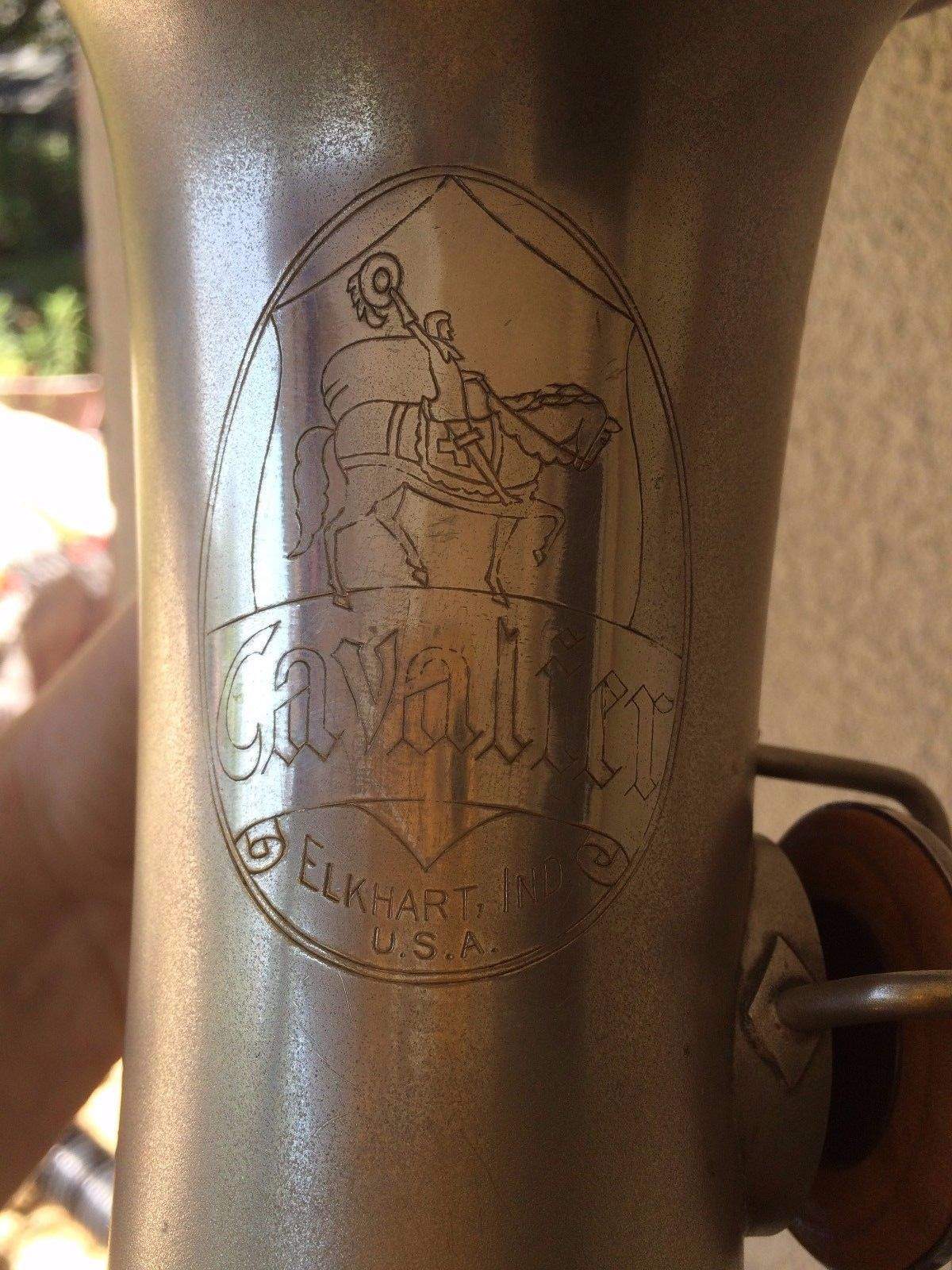


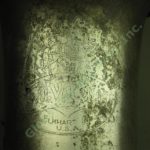
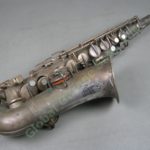


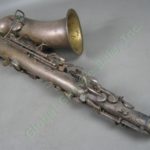

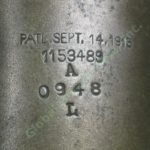

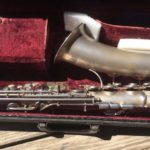
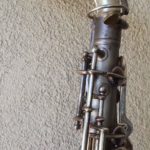
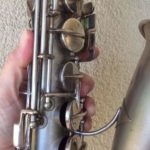

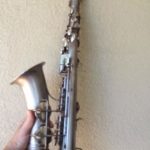
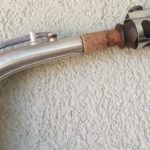
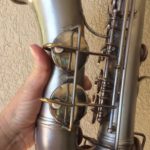
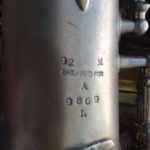
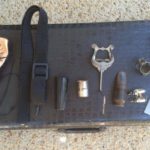
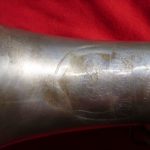
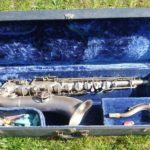
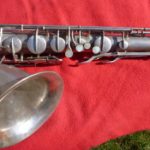
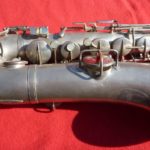
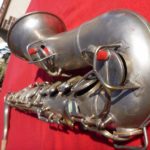
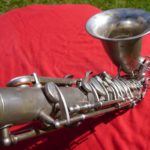
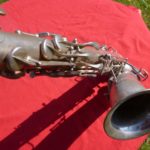

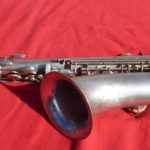


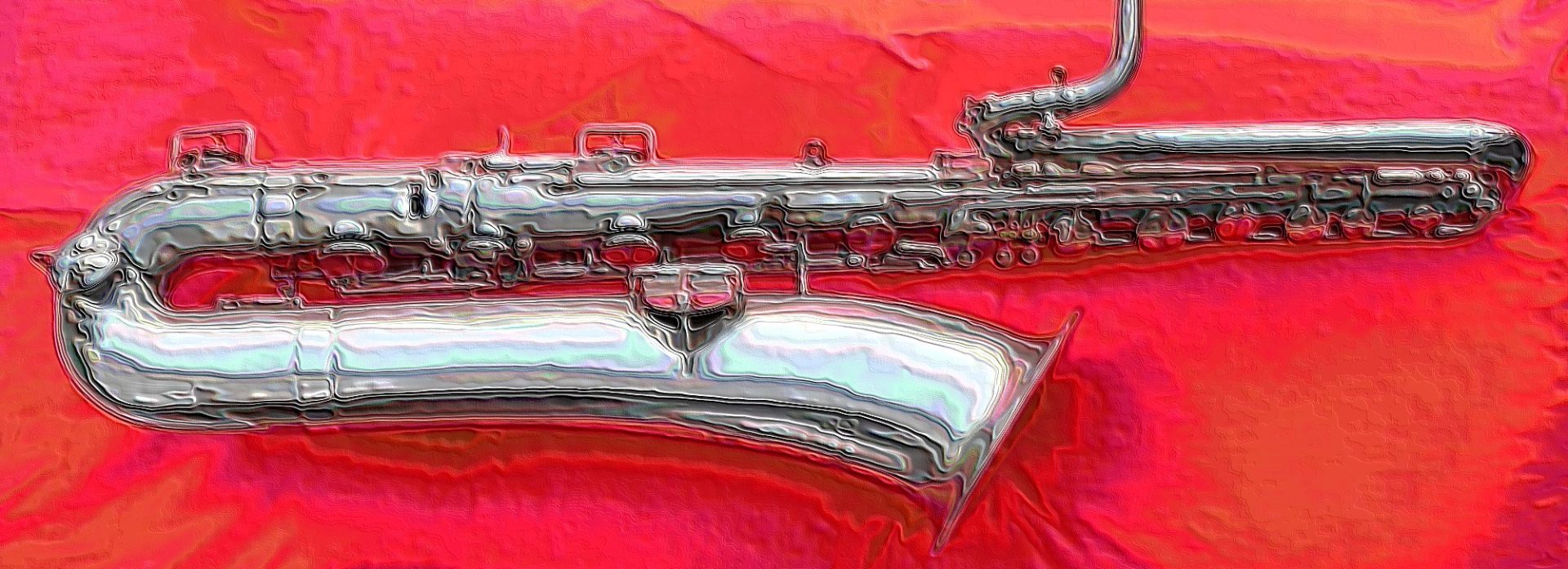
Hi Helen here are some pictures from an Alcazar saxophone for sale.
Without neck, but with an incredible price.
https://www.ebay.de/itm/1920s-ALCAZAR-by-CONN-TENOR-SAX-made-in-USA/122832424936?_trkparms=aid%3D222007%26algo%3DSIM.MBE%26ao%3D2%26asc%3D49483%26meid%3Dbaa29961f970496eae1a55bd92fd055e%26pid%3D100005%26rk%3D6%26rkt%3D6%26sd%3D352219895911&_trksid=p2047675.c100005.m1851
It has the same patent number as the Cavelier, so it could be another Pan American stencil.
The brand name Alcazar is connected to shady deals of the “William brothers” according to this source:
https://groups.google.com/forum/#!topic/alt.music.saxophone/ofbl5SfHFIU
Another Alcazar is engraved with 94M but is clearly not a Keilwerth 94M DJH modified saxophone or a Cannonball Alcazar.
https://www.saxophonepeople.com/alcazar-made-in-elkhart-indiana-113244.html
There seems to be a story behind this stencil name.
Thanks Theo!
I love the description: “neck socket was somewhat squeezed = check last 3 pics” 😀
Yup… Definitely “somewhat” alright. 😉
On Ebay in Austalia is a Cavalier but different to the Conn ones mentioned.
Serial number is 3735## above made in germany.
Has rolled tone holes and looks a bit like an Amati/Keilwerth or one of that ilk.
Any thoughts on this?
Good find! Hi there Stuart. Welcome to my website.
What you’ve stumbled across there is a Kohlert stencil from circa 1957. It would most closely resemble the 57 model in the gallery I have linked to. (It is worth nothing here that the seller only provides a 5 digit serial #, which is clearly wrong. Unfortunately the pics are so small, that one can’t make out the details.)
This would most likely be a lovely horn–provided it is not damaged.
Thx for the info Helen
I think they meant a 6 digit serial number – seemed to be in perfect condition from the 6 or so photos that were on Ebay.
Sold for about $450 AUD – someone got a great buy.
Thanks Helen for posting this.
I bought a 92M Cavalier alto – same side bell keys, bis key but, no front F no dings or scratches and the plating still 100%. It played with a beautiful vintage tone but after replacing worn pads it was surplus to my needs and I sold it on at cost to a student. No frills certainly but never a junker. The student still owns it three years on.
Hi Helen,
Here is a picture of a cavalier with a front F key.
and here is the serial number.
Interesting. I’m guessing then some other things also evolved over the brands production run.
Thanks Theo!
I have Cavalier 96M in good condition. I am learning to play on it. serial number 9570. If you are interested in the photo, can make and send.
Hello Max.
Yes, I would love to see some photos of your saxophone. Please send them to me at: bassic.sax.ca@gmail.com
I bought a Cavalier alto similar to the one pictured. The finish was basic – no engraving other than the trademark lozenge – no front F (neither has my Mk VI sop). After a trip to the tech it played beautifully with a creamy tone. I sold it on to a 16 year old student – I told him to get something more modern but he loved the tone.
I’m starting to think these Cavaliers are sleeper horns.
From all I’m reading about the brand, and hearing from current and previous owners, it tends to confirm my view that old student model saxes are waaay better than most of the POS that are being passed of as student horns today.
I just bought a Cavalier Tenor Sax, S/N 8954 from a local music dealer I trust. This horn plays great and has a wonderful tone! I’m not sure if there was significant variation from when the line was introduced until when my horn was made, but I really love the instrument. Someone must have taken reasonably good care of it. This is my 2nd horn, but I suspect it may become my first horn despite its limitations.
This picture shows the generic “PATENT APP’D FOR” message, plus the letter “T”, then the Serial Number, then the letter “L”
I’ve played all of two Cavalier altos. Easily the worst horns I’ve played.
Second line (although Cavalier would be “third line”) non-pro models have never been my focus. However, I would like to see some side-by-side comparisons with not only the pro Conns of that day, but of ones from 10-20 years earlier. Maybe Cavalier vs. a 10-20 year earlier Pan Am. I think that could be interesting.
Nice article, Helen!